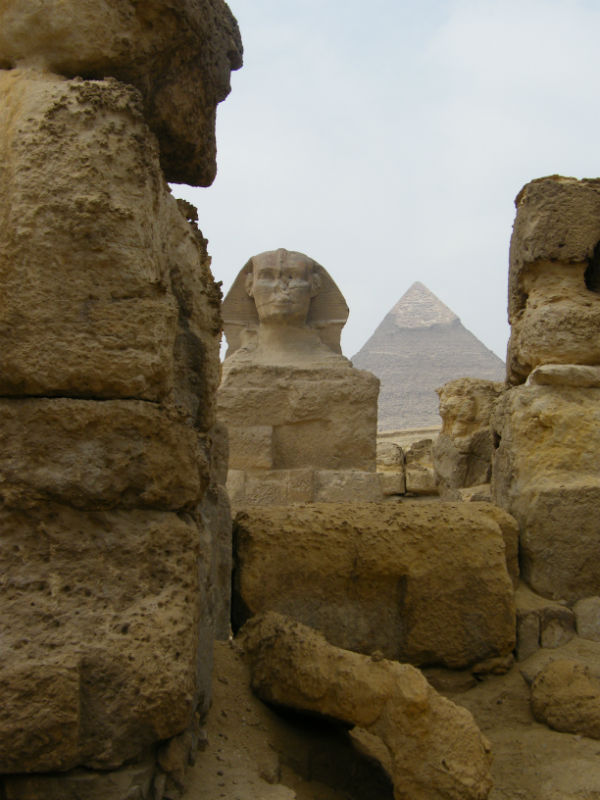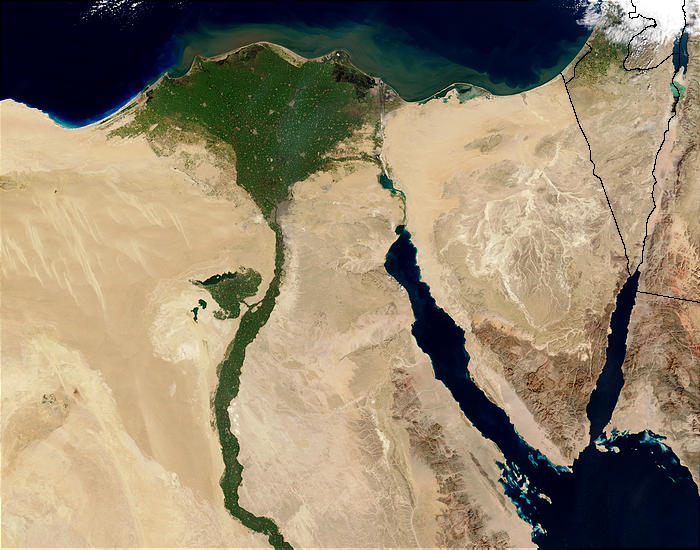Ancient Egypt: Study augments the drought theories

Recent research testifies archeological records of droughts in Ancient Egypt during the demise of Egypt’s old kingdom, the era known as the pyramid-building time. A study of ancient pollen and charcoal preserved in deeply buried sediments in Egypt’s Nile Delta provides evidence of droughts and fires, including a huge drought 4,200 years ago.
Christopher Bernhardt, a researcher with the U.S. Geological Survey, explained that humans have a long history of having to deal with climate change. Bernhardt pointed that along with other research, this study geologically reveals that the evolution of societies is sometimes tied to climate variability at all scales – whether decadal or millennial. USGS Director Marcia McNutt said that water availability was the climate-change Achilles Heel then for Egypt, as it may well be now, for a planet topping seven billion thirsty people. She points that even the mighty builders of the ancient pyramids more than 4,000 years ago fell victim when they were unable to respond to a changing climate.

The preserved pollen and charcoal used for this research was taken from Nile Delta sediment core dating from 7,000 years ago to the present to help resolve the physical mechanisms underlying critical events in ancient Egyptian history. Their motive was to see if changes in pollen assemblages would reflect ancient Egyptian and Middle East droughts recorded in archaeological and historical records.
They also examined the presence and amount of charcoal as fire frequency often increases during times of drought, and fires are recorded as charcoal in the geological record. The scientists suspected that the proportion of wetland pollen would decline during times of drought and the amount of charcoal would increase which proved right as large decreases in the proportion of wetland pollen and increases in microscopic charcoal occurred in the core during four different times between 3,000 and 6,000 years ago.

Research also shows that there was an abrupt and global mega-drought of around 4,200 years ago, a drought that had serious societal repercussions, including famines, and which probably played a role in the end of Egypt’s Old Kingdom and affected other Mediterranean cultures as well.
“Our pollen record appears very sensitive to the decrease in precipitation that occurred in the mega-drought of 4,200 years ago. The vegetation response lasted much longer compared with other geologic proxy records of this drought, possibly indicating a sustained effect on delta and Nile basin vegetation.” Christopher Bernhardt, USGS
Similarly, pollen and charcoal evidence recorded two other large droughts: one that occurred some 5,000 to 5,500 years ago and another that occurred around 3,000 years ago.
These events are in synchronicity with those recorded in human history – the first one started some 5,000 years ago when the unification of Upper and Lower Egypt occurred and the Uruk Kingdom in modern Iraq collapsed. The second event took place around 3,000 years ago in the eastern Mediterranean and is associated with the fall of the Ugarit Kingdom and famines in the Babylonian and Syrian Kingdoms.
“The study geologically demonstrates that when deciphering past climates, pollen and other micro-organisms, such as charcoal, can augment or verify written or archaeological records – or they can serve as the record itself if other information doesn’t exist or is not continuous,” Benjamin Horton, Penn’s Department of Earth and Environmental Science
The study “Nile delta response to Holocene climate variability” was published in the July edition of Geology, conducted by Christopher E. Bernhardt as part of his Ph.D. at the University of Pennsylvania, along with Benjamin Horton, an associate professor in Penn’s Department of Earth and Environmental Science and Jean-Daniel Stanley at the Smithsonian Institution.
Source: USGS, TerraDaily, Geology.GSA
Featured image: The Sphinx and the Great Pyramid of Giza, Egypt. Credits: U.S. Geological Survey Department of the Interior USGS U.S. Geological Survey photo by Benjamin P. Horton , University of Pennsylvania.

Wonder if there is any truth to the story of Joseph and the 7 years of famine, and 7 years of plenty?